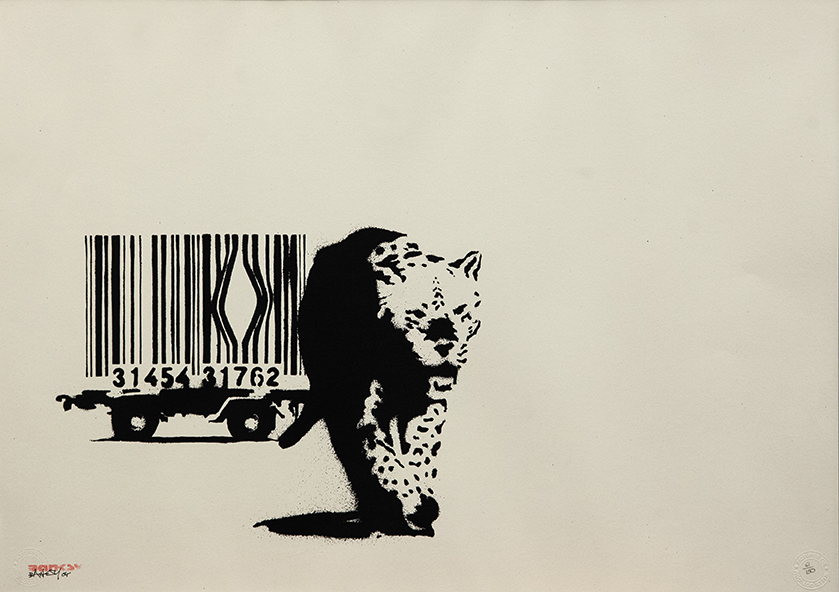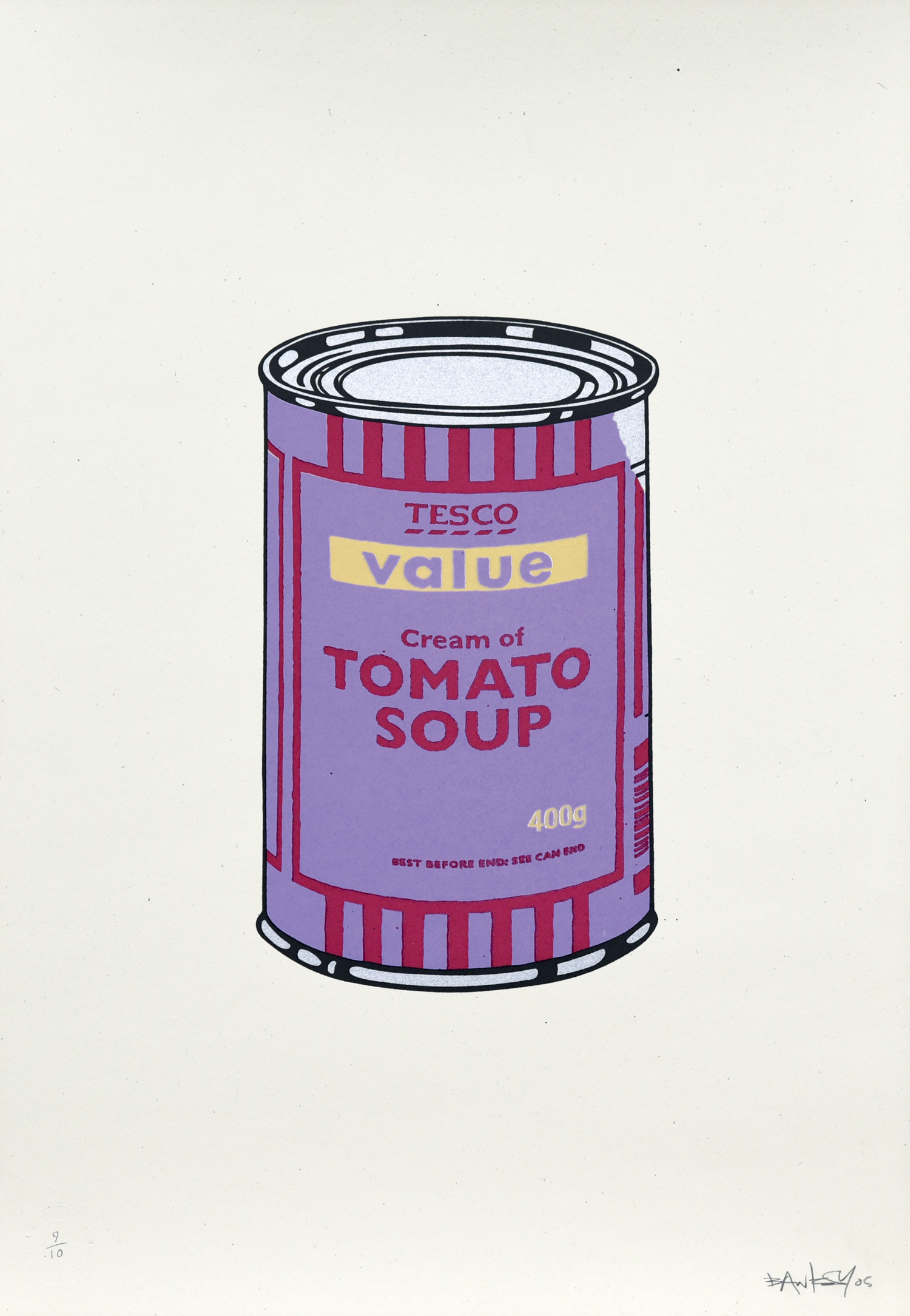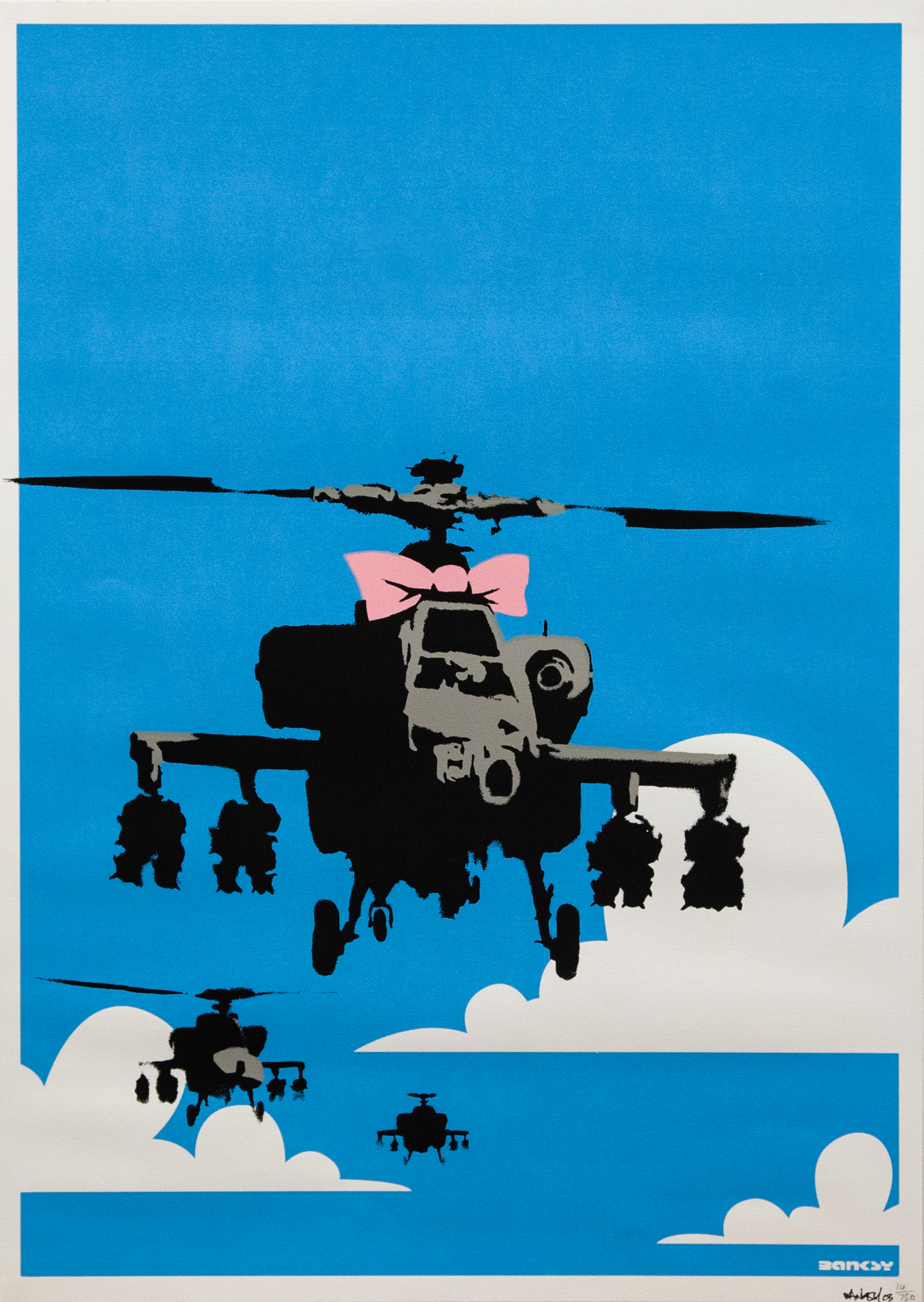BANKSY. A VISUAL PROTEST
BANKSY. A VISUAL PROTEST, CHIOSTRO DEL BRAMANTE, ROME, 08/09/2020 – 11/04/2021
[Notice to the Reader: in the absence of any certain information about the artist’s identity and his thought, in the text that follows we have decided to offer some suppositions. Most of what is reported is drawn from publications by Banksy and from some more or less authorized interviews he has given in the past.]

“Barcode”, 2004, screenprint on paper, Artrust
Imagine a city where graffiti wasn’t illegal, a city where everybody could draw whatever they liked. Where every street was awash with a million colors and little phrases. Where standing at a bus stop was never boring. A city that felt like a party where everyone was invited, not just the estate agents and barons of big business. Imagine a city like that and stop leaning against the wall – it’s wet.
Over 100 works, in a rigorous exposition itinerary, illustrate Banksy’s world. The 16th-century architecture of the Chiostro del Bramante in Rome becomes a setting for the “unknown” artist who has charmed the world through works steeped in irony, denunciation, politics, intelligence, and protest.
From Love is in the Air to Girl with Balloon; from Queen Vic to Napalm, from Toxic Mary to HMV, from the press runs for the book Wall & Piece to the projects for vinyl and CD covers.
I was pretty bad with the spray can, so I started cutting out the stencils: Banksy’s own words provide some indications as to the technique he most frequently uses. On display, thanks to stenciling: paper or canvas prints, along with a selection of unique works executed using different techniques – oil or acrylic on canvas, spray on canvas, stencils on metal or concrete, painted polymeric sculptures or varnished bronze ones.
The exhibition itinerary features over twenty projects for record and book covers, spanning the years from 2001 to 2017. All works come from private collections.

“Soup Cans: Violet Cherry Beige”, 2005, coloured screenprint on paper, Artrust
Who is Banksy?
I don’t know why people are so keen to put the details of their private life in public; they forget that invisibility is a superpower.
Presumably born in Bristol at the beginning of the 1970s, Banksy is regarded as one of the leading representatives of street art. In 2019 he was ranked fourteenth on ArtReview’s list of the one hundred most influential personalities in the art world. Yet no one, apart from his closest friends and collaborators, knows his identity.
What we do know is that he trained in the underground British scene, where he worked with several artists and musicians. We also know that his artistic output began in the late 1990s. From that moment onwards, he started making his presence felt in many cities – from Bristol and London to New York, Jerusalem, and Venice – with graffiti and various performances and incursions.
I have no interest in ever coming out. I figure there are enough self-opinionated assholes trying to get their ugly little faces in front of you as it is.
There are a number of reasons for Banksy’s choice to remain anonymous: the need to elude the police, given his illegal incursions and graffiti; the need to protect himself, given the satirical background of his works touching upon sensitive issues like politics and ethics; and the desire not to compromise the perception of his identity and works, as the artist himself states.
The public
Art is not like other cultures because its success is not made by its audience. The public fill concert halls and cinemas every day, we read novels by the millions and buy records by the billions. ‘We the people’ – affect the making and quality of most of our culture, but not our art.
The Art we look at is made by only a select few. A small group create, promote, purchase, exhibit and decide the success of Art. Only a few hundred people in the world have a real say. When you go to an Art gallery you are simply a tourist looking at a trophy cabinet of a few millionaires.
Banksy employs a direct form of communication, rejecting the system and its rules. The artist addresses his public without any filters, and his works are visual texts capable of informing and inspiring reflection.

“Happy Choppers”, 2003, screenprint on paper, Brandler Galleries (Brentwood)
Themes
They exist without permission. They are hated, hunted and persecuted. They live in quiet desperation amongst the filth. And yet they are capable of bringing entire civilizations to their knees. If you are dirty, insignificant, and unloved then rats are the ultimate role model.
War, wealth and poverty, animals, globalization, consumerism, politics, power, and environmentalism: the themes Banksy explores are the world’s themes.
Technique
Graffiti has been used to initiate revolutions, stop wars, and in general, they are the voice of people who are not heard. T.V. has made going to the theatre seem pointless, photography has pretty much-killed painting but graffiti has remained gloriously unspoiled by progress.
BANKSY A VISUAL PROTEST
exhibition organized by DART Chiostro del Bramante in collaboration with 24 ORE Cultura and designed by Madeinart
with the patronage of Regione lazio – Assessorato alla Crescita Culturale
media partner Sky Arte – Radio Monte Carlo
technical partner Active Image Gmbh – Scatto Srl – Tecnoservice2000
media coverage Arte.it – Wanted in rome
PRESS OFFICE
adicorbetta
info@adicorbetta.org | t. 02 89053149
Chiostro del Bramante
Raffaele Brancato e Annalisa Esposito
comunicazione@chiostrodelbramante.it



